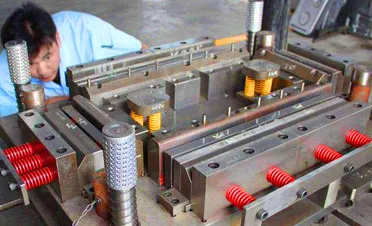sand for casting metal
Sand for Casting Metal An Essential Material in Foundry Processes
Casting is a vital process in manufacturing, enabling the creation of complex metal shapes and components. Among the various materials used in casting, sand stands out as one of the most essential and widely employed media. This article explores the significance of sand in metal casting, its properties, types, preparation processes, and the overall role it plays in the foundry industry.
The Importance of Sand in Metal Casting
Sand casting is one of the oldest and most versatile methods of producing metal parts. The primary reason for the popularity of sand lies in its availability, cost-effectiveness, and ability to withstand high temperatures. When molten metal is poured into a sand mold, it cools and solidifies into the desired shape. Sand molds can be made in various sizes and complexities, allowing manufacturers to produce everything from small intricate components to large heavy parts.
Properties of Sand
The ideal sand for casting must possess certain properties that ensure the quality of the final product. Some critical characteristics of casting sand include
1. Grain Size The size of the sand grains affects mold permeability and surface finish of the cast object. Finer grains provide better surface details, while coarser grains allow for better airflow during the pouring of molten metal.
2. Shape The shape of the sand grains can influence the mold strength and the quality of the casting. Angular grains provide better interlocking, while rounded grains offer greater flexibility.
3. Sand Strength The ability of the sand to hold its shape when forming the mold is crucial. Adequate strength prevents deformation during pouring and ensures the stability of the mold.
4. Refractoriness This property refers to the sand’s ability to resist high temperatures without melting or breaking down. Refractory sands are essential in casting processes involving metals with high melting points.
5. No-Bake Capability Some modern casting techniques utilize no-bake sand systems, allowing molds to be created without the use of water, thereby preventing moisture-related defects in castings.
sand for casting metal

Types of Sand Used in Casting
The most commonly used sands in the casting process include
1. Silica Sand This is the most popular type of sand in the foundry industry due to its high refractoriness and availability. It is composed mainly of silicon dioxide and is used in various casting processes.
2. Zircon Sand Known for its exceptional thermal properties, zircon sand is used in specialized casting applications. It has a higher melting point than silica, making it suitable for casting high-temperature metals.
3. Chromite Sand This type is favored for casting ferrous and non-ferrous metals. Chromite exhibits excellent thermal conductivity and a high melting point, which results in superior cast quality.
4. Core Sand Core sand is a special mixture used to make cores for hollow casting. It typically contains resins and binders to provide additional strength and integrity.
Preparing Sand for Casting
The preparation of sand involves several steps to create optimal casting conditions. Typically, sand is first treated to remove impurities and then mixed with bonding agents, such as clay or resin, to enhance its binding capabilities. This mixture is then shaped into molds using manual or automated processes.
After casting, the molds must be reclaimed and recycled to minimize waste. The ability to reuse sand has made it a sustainable option in the foundry industry.
Conclusion
The use of sand in metal casting is a pivotal aspect of the manufacturing landscape. Its unique properties and versatility enable the production of high-quality metal components across various industries. As technology advances, innovations in sand treatment and mold-making continue to enhance the efficiency and effectiveness of casting processes. With its fundamental role firmly established, sand remains a cornerstone of the casting industry, ensuring that it can meet the growing demands of modern manufacturing.
-
OEM Sand Cast Pump Valve Fittings - Baoding Hairun Machinery And Equipment Trading Co., Ltd.NewsAug.01,2025
-
Custom OEM Impellers | High Efficiency & PrecisionNewsAug.01,2025
-
OEM Sand Cast Pump Valve Fittings - Baoding Hairun Machinery | Customization, Quality AssuranceNewsAug.01,2025
-
OEM Sand Cast Pump Valve Fittings - Baoding Hairun Machinery And Equipment Trading Co., Ltd.NewsAug.01,2025
-
OEM Sand Cast Pump Valve Fittings - Baoding Hairun Machinery And Equipment Trading Co., Ltd.NewsJul.31,2025
-
OEM Sand Cast Pump Valve Fittings - Baoding Hairun | Precision Engineering, CustomizableNewsJul.30,2025















